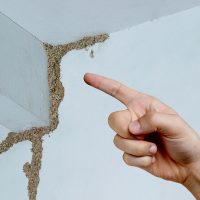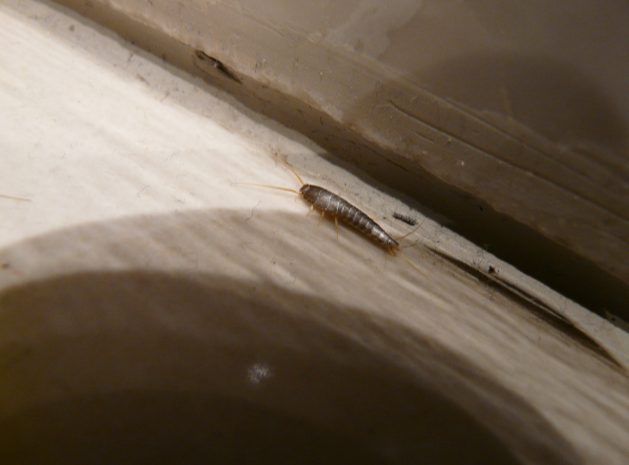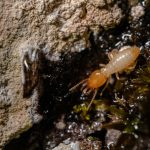Knowing how to get rid of silverfish is crucial, especially if you have books in hard copy.
Usually, silverfish can be a major threat to your books, valuable papers, and cherished memories, as they can cause huge damage by feeding on the starch and cellulose in these items.
Importantly, all book lovers, librarians, and anyone who appreciates paper items should be aware of identifying, preventing, and controlling silverfish. Therefore, in this post, we’ll provide detailed guidance on not letting the silverfish damage your books.
Reasons You Need to Know How to Get Rid of Silverfish
Silverfish consume starch and cellulose, which are found in book covers, pastes glued to wallpaper, and adhesives on paper. This is why you need to know how to get rid of silverfish, as they are particularly attracted to books and papers.
Notably, silverfish are small, wingless, silvery in color, teardrop-shaped, and tapering, resembling a fish. They have a shiny scale along the body, setting them apart from other common book-damaging pests, such as booklice or termites.
About their behavior, they are nocturnal and are extremely fast runners, making them hard to catch. Also, the insects move in groups at night and love to live in dark, damp areas such as kitchens, bathrooms, basements, and storerooms.
Importantly, silverfish, with their high resilience, can survive weeks without food, and even longer when supplied with water.
Signs of Silverfish Infestation in Books and Papers
Recognizing the signs of silverfish infestation enables you to stay vigilant and detect them early. Early detection is the key to preventing widespread damage, giving you the upper hand in protecting your books and papers.
Therefore, keep an eye out for these initial signs:
- Holes and Feeding Signs: Silverfish feed on paper, books, and cardboard, creating unsymmetrical holes, notches, or grooves. You might even find frayed pages or book cover edges.
- Yellowish Stains: Silverfish cause yellowish discoloration on paper and other materials they infest.
- Droppings: They leave a trace of their droppings or dampness wherever they go. Their droppings are extremely minute, dark dots that look like pepper and are found close to the infested object.
- Shed Skins: Silverfish molt their skin periodically while alive, leaving tiny, white exoskeletons in hidden areas.
- Live Insects: Direct live sightings of the silverfish, particularly during nighttime, because they are nocturnal, are an absolute indication of infestation.
How to Get Rid of Silverfish Infestations
In case you suspect infestation, act early before they cause major damage.
1. Use Traps
Use of sticky traps is one of the ways to control silverfish. Usually, the traps are coated with glue and can be used in areas infested with silverfish for population detection and control.
2. Apply Insecticides
You can eradicate silverfish using insecticidal sprays or dust sprays, but use them carefully where children and pets are present.
3. Professional Pest Control
In cases of heavy infestations, professional pest control is your best option. DIY treatments often miss eggs, leading to re-infestation. On the other hand, professionals use effective and long-lasting chemicals, giving you confidence in the safety of your belongings.
Prevention of Silverfish from Damaging Your Belongings
Silverfish can be effectively managed through treatment. Importantly, as Singapore is a high-humidity country, you need to be proactive in your approach by taking the following measures:
- Lowering Humidity: Install dehumidifiers in rooms with high humidity, such as bathrooms, storerooms, and basements. Also, ventilate laundry and kitchen areas well.
- Keep Things Properly: Books, paper, and cloth should be stored in air-tight plastic bags and never in cardboard boxes, as silverfish will easily infest and feed on them.
- Protect your paper items: Before packing books and documents away, ensure they are thoroughly dusted. Importantly, keep starchy substances, crumbs, or food bits away from your precious items to take control of the situation and prevent potential silverfish infestations.
- Seal Openings: Inspect walls, foundations, windows, and doors of the home for gaps, cracks, and crevices. Then, seal them with caulk to keep silverfish out.
- Inspect Secondhand Objects: Carefully inspect books, furniture, and boxes when bringing them in, as silverfish like to hitch a ride on them.
Conclusion
Silverfish can completely ruin irreplaceable objects, such as photograph albums, aged documents, and valuable books. However, if you apply the above guidelines and preventive actions, you can safeguard your properties.
Importantly, if you already have a silverfish infestation, do not hesitate any longer to get a pest control professional to examine and rectify the situation at once.
For details on our silverfish control services, specifically tailored for Singapore, please contact us today. We will provide practical, safe, and long-term pest control services that will safeguard your books and paper documents.








































